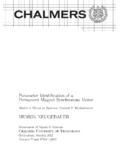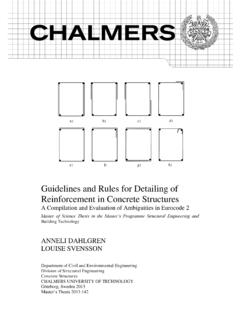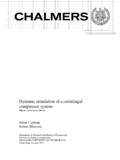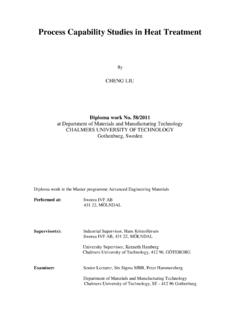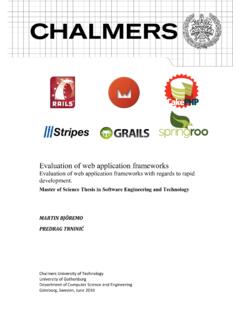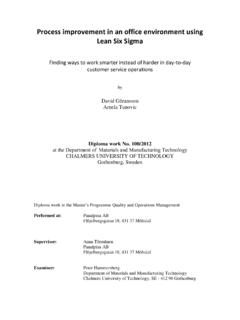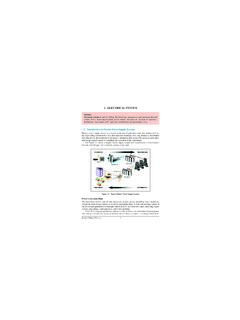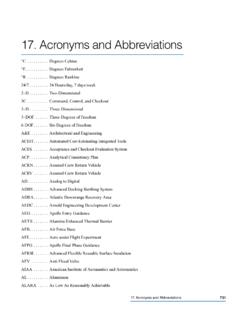Transcription of Space for picture - Chalmers Publication Library (CPL)
1 Space for picture Replace this square with a picture illustrating the content of the report. This picture should be floating over the text , in order not to change the position of the title below (clic on Format: Object: Layout, and chose In front of text ). Instructions for use of this template Replace the yellow marked text with your own title, name etc on the first nine pages. Replace only the text and not the return-signs, comment marks [mp1] etc. Update all field in the document by choosing Edit: Select All (Ctrl A) and then clicking the F9-button. Write your report using the formats and according to the instructions in this template.
2 When it is completed, update the table of contents. The report is intended to be printed double-sided. Battery thermal management Systems of Electric Vehicles Master's Thesis in Automotive Engineering JILING LI. ZHEN ZHU. Department of Applied Mechanics Division of Vehicle Engineering & Autonomous Systems Road Vehicle Aerodynamics and thermal management Chalmers UNIVERSITY OF TECHNOLOGY. G teborg, Sweden 2014. Master's thesis 2014:42. MASTER'S THESIS IN AUTOMOTIVE ENGINEERING. Battery thermal management Systems of Electric Vehicles JILING LI. ZHEN ZHU. Department of Applied Mechanics Division of Vehicle Engineering & Autonomous Systems Road Vehicle Aerodynamics and thermal management Chalmers UNIVERSITY OF TECHNOLOGY.
3 G teborg, Sweden 2014. Battery thermal management Systems of Electric Vehicles JILING LI. ZHEN ZHU. Jiling Li;Zhen Zhu, 2014. Master's Thesis 2014:42. ISSN 1652-8557. Department of Applied Mechanics Division of Vehicle Engineering & Autonomous Systems Road Vehicle Aerodynamics and thermal management Chalmers University of Technology SE-412 96 G teborg Sweden Telephone: + 46 (0)31-772 1000. Cover: Saab 9-3 ePower electric vehicle made its debut at 2010 Paris Motor Show Chalmers / Department of Applied Mechanics G teborg, Sweden 2014. Battery thermal management Systems of Electric Vehicles Master's Thesis in Automotive Engineering JILING LI.
4 ZHEN ZHU. Department of Applied Mechanics Division of Vehicle Engineering & Autonomous Systems Road Vehicle Aerodynamics and thermal management Chalmers University of Technology ABSTRACT. Electric vehicles (EV) develop fast and have become popular due to their zero emission and high tank-to-wheels efficiency. However, some factors limit the development of the electric vehicle, especially performance, cost, lifetime and safety of the battery. Therefore, the management of batteries is necessary in order to reach the maximum performance when operating at various conditions. The battery thermal management system (BTMS) plays a vital role in the control of the battery thermal behaviour.
5 The BTMS technologies are: air cooling system, liquid cooling system, direct refrigerant cooling system, phase change material (PCM) cooling system, and thermo-electric cooling system as well as heating. These systems are analysed through a trade-off between performance, weight, size, cost, reliability, safety and energy consumption. According to the analysis two prime battery thermal management systems are recommended: combined liquid system (CLS) and a variant system with PCM. The models of CLS and PCM system were built and simulated using software MATLAB/Simulink. The simulation results predict the battery temperature variation and the energy consumption of BTMS.
6 Through simulating the PCM system model, the effect of PCM on battery temperature variation was investigated and the proper PCM. mass was estimated. Seen from the simulation results, BTMS is of great importance to control battery thermal behaviour. Further study could be more comprehensive and accurate through combining the simulation model with battery thermal electric and CFD models. Key words: EV, Battery thermal management , BTMS, Air cooling system, Liquid cooling system, Direct refrigerant system, PCM, MATLAB/Simulink model I. II. Contents 1 INTRODUCTION 1. Background 1. Objectives 1. Limitation 1. Thesis Outline 2. 2 THEORY 3.
7 Lithium-ion Battery 3. Mechanism of Secondary Lithium-ion battery 3. thermal Issues of Li-ion battery 4. Operating Requirements 5. Heat Transfer 7. Overall Heat Transfer Coefficient 7. Heat Balancing within Heat Exchanger 9. On-Off Controller 10. Phase Change Material (PCM) 12. 3 BATTERY thermal management SYSTEMS (BTMS) 13. Systems Functions 13. Technologies of BTMS 14. Air Cooling and Heating 14. Liquid Cooling and Heating 15. Direct Refrigerant Cooling and Heating 16. PCM 17. Thermoelectric Module 17. Heat Pipe 18. PTC Heater 19. Evaluation of Different Technologies 19. Forced Air System 19. Liquid System 20. PCM System 20. Thermo-electrics 21.
8 Recommended Cooling System 22. Combined Liquid System (CLS) 22. PCM Model (CLS+PCM) 23. 4 MODELLING OF BTMS 24. Modelling Conditions 25. CLS Model 27. Battery Unit 27. III. Air Conditioner (Active Cooling) 28. Radiator (Passive Cooling) 28. PTC Heater (Heating) 29. Pump 29. Control Unit 31. PCM Model 33. Performance Parameters 34. 5 RESULTS AND DISCUSSION 36. CLS Model 36. NEDC versus US06 39. Cold and Hot Weather 40. Mild Weather 44. PCM Model 45. Comparison of Two Systems 45. Choose the PCM Mass 46. 6 CONCLUSION 49. 7 FUTURE PROSPECTS 50. REFERENCES 52. APPENDIX A: SYSTEM EVALUATION 54. APPENDIX B: MODELLING PROCESS 57. APPENDIX C: CLS RESULTS 59.
9 APPENDIX D: CLS+PCM RESULTS 63. IV. Acknowledgements It is our honour to be involved in this master thesis project. Experts at LeanNova Engineering AB have been very welcoming, friendly and helpful throughout our thesis. They have continuously supported us with their comprehensive expertise and knowledge of automotive systems. We have gained a lot from this thesis not only the experience but also the innovate spirit to solve complex problems. We would like to extend a warm thank you to our supervisor Peter Hayden who has been involved in most of this thesis. With his expertise for HVAC system, we have managed to solve dozens of problems.
10 He also inspired us with ideas, action and confidence by talking with us patiently. The project would never have completed without his engineering skills and management . Thank you also to all our great team members. Zhongyuan Zhang has provided us strong theoretical support in thermodynamic, MATLAB simulation and battery technology. Her guidance took us directly into the central issues without detour. Claes Zimmer and Anders Lind n have accompanied us from the beginning to the end with their knowledgeable comments and answers to all our questions. We would also like to thank our examiner Professor Lennart L fdahl. In weekly conversation during the project he has brought us his guidance and advice in every aspect.
